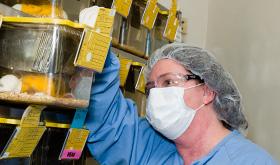By Frank Blanchard, Staff Writer; photos by Frank Blanchard and Richard Frederickson, Staff Photographer
Each day at 6 a.m. the lights pop on inside 18 buildings on the NCI at Frederick campus, illuminating the residential quarters for thousands of research mice. For the mice, it’s the end of their nocturnal day. For their caretakers, however, the day has just begun.
As the animal workers arrive, they suit up for the job; some shower first. They put on steel-toed shoes, safety glasses, and thin, billowy hats. Before stepping into an animal room, they add another layer: face masks and gloves.
For the most part, these garments are designed to protect not the workers, but the mice.
The animals are here to perform a vital function as research participants. Many are genetically engineered to mimic as closely as possible the biology of humans, so new treatment approaches can be evaluated accurately in living systems. Some have been bred over many generations and are not easy to replace. They are under the watchful care of about 130 animal caretakers and technical staff.
Breeding Healthy Research Animals Takes Time and Meticulous Care
Melinda Hollingshead, D.V.M, Ph.D., chief of the Biological Testing Branch, NCI, said it can take months or years to make complex transgenic mice for research.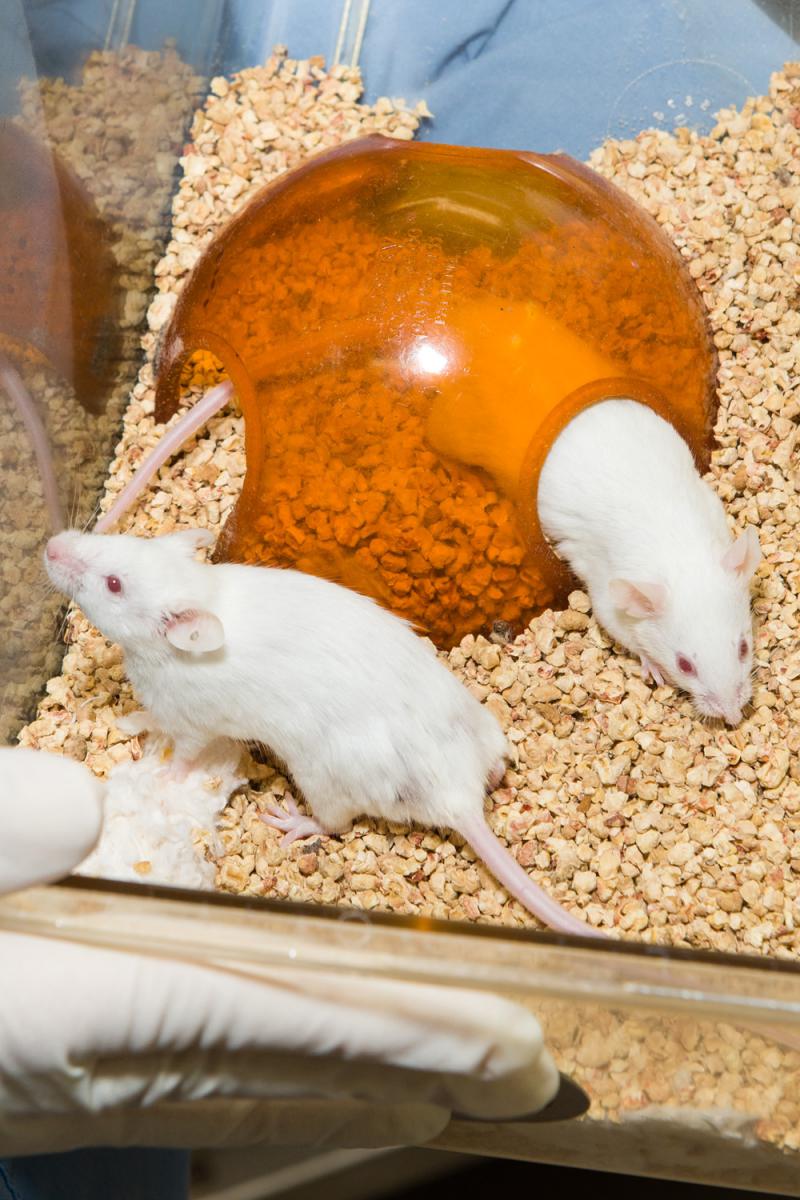
“Some of these mice have multiple genetic alterations,” she said. “You could be crossbreeding with other strains. It could take six months for mouse one and six months for mouse two, and then you crossbreed those and it takes another six months. Some are difficult to breed, so it could be many months before you get enough mice to do even a small experiment.”
To ensure their well-being, each mouse is visually inspected twice a day. Bedding is changed once or twice a week. Most cage wash areas run eight hours a day to ensure caging supplies are available around the clock. Super-soft bedding is an option for hairless mice and those with other physical issues. The animals get nesting materials and sunflower seeds for enrichment. If a mouse is not breeding as needed, caretakers provide a small red hut as an additional amenity.
“We do want them to be comfortable and healthy. They are very important to the research that goes on here,” Facility Manager Rhonda Anderson said.
The Stakes Are High and the Work Is Hard
Serguei Kozlov, Ph.D., of the Center for Advanced Preclinical Research (CAPR), said a healthy colony of experimental mice is essential.
“With numerous high-scale projects in the CAPR partnership portfolio, the stakes are high and the pressure is on,” he said. “A single lost or diseased animal can delay the study, a missed observation might trigger going back to an expensive repeat, a wrong number entered or animal misidentified may change the conclusions of the study.”
Animal care is a demanding job physically, and a lot is expected, said Peter Gorelick, head of the Animal Health Diagnostic Laboratory. “The [employees] who remain have dedication and ability to meet the needs of the program. If you don’t love the job, you won’t last very long.”
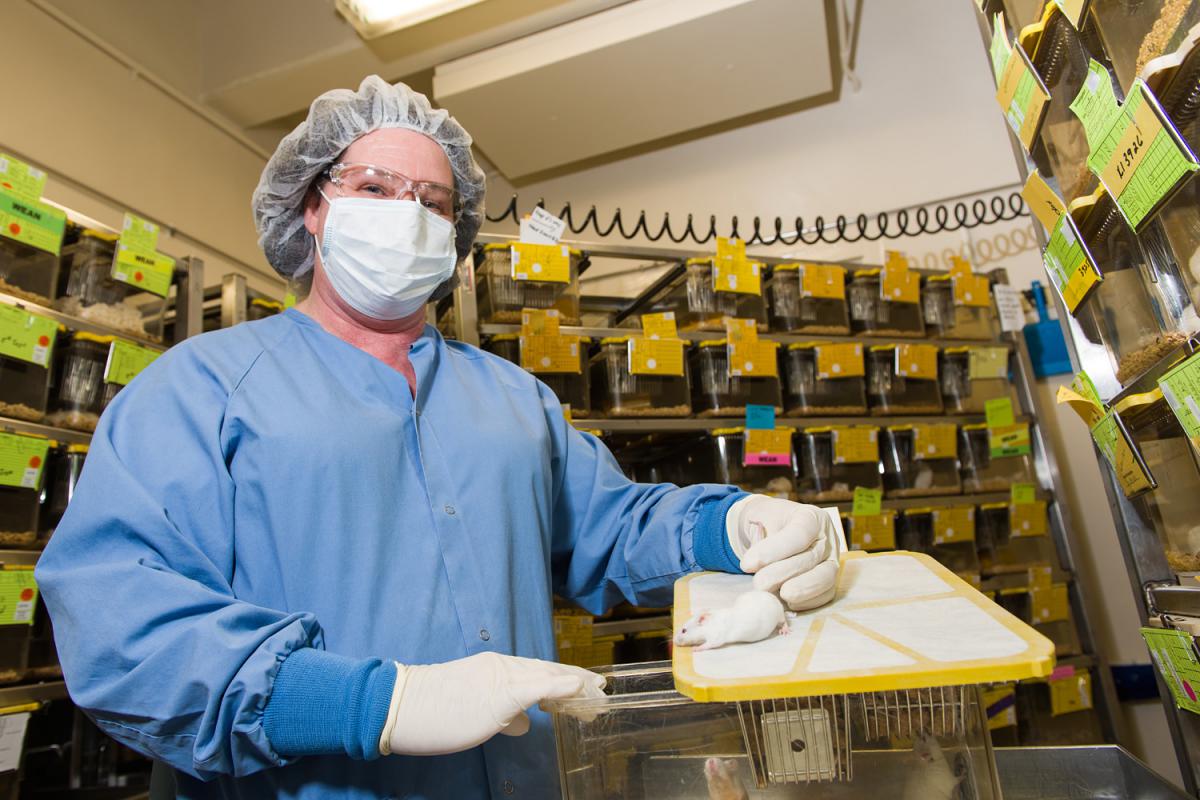 Animal Caretaker II Kimberly Geisinger said she is responsible for two rooms—one with 540 cages and the other with 475. Each cage is checked twice a day, at the start and end of her shift.
Animal Caretaker II Kimberly Geisinger said she is responsible for two rooms—one with 540 cages and the other with 475. Each cage is checked twice a day, at the start and end of her shift.
“We call it a health check,” she said. “We make sure everybody’s got water and feed, and you do treatments” that tend to physical needs of the mice, such as raw spots on their skin. Some strains need their teeth trimmed so they can chew food properly.
“It’s cool to take care of them,” Geisinger said. “I love it.” She said she is also gratified by knowing she might be saving someone’s life through the research she is helping to support.
Geisinger works 6 a.m. to 2:30 p.m. Each health check takes 30 to 45 minutes, depending on what care is needed.
“It is hard work,” she said. “You are always on your feet, using all parts of your body. It’s hard on your back because you’re doing the same thing over and over every day. But I love my job….And I like the animals. You get used to them.”
Hollingshead is building a repository of patient-derived xenografts for intramural and extramural researchers. Many organizations lack access to the patient tumor samples and animal facilities necessary for producing animal models for research. She believes that a shared repository would be a valuable asset, as would each individual mouse in the collection.
“A mouse implanted with a human specimen is a one-time shot,” she said. “A person, hopefully, has surgery one time for a tumor; it’s resected and it never comes back. If you lose that mouse or those mice, that sample is lost forever. It is not replaceable.”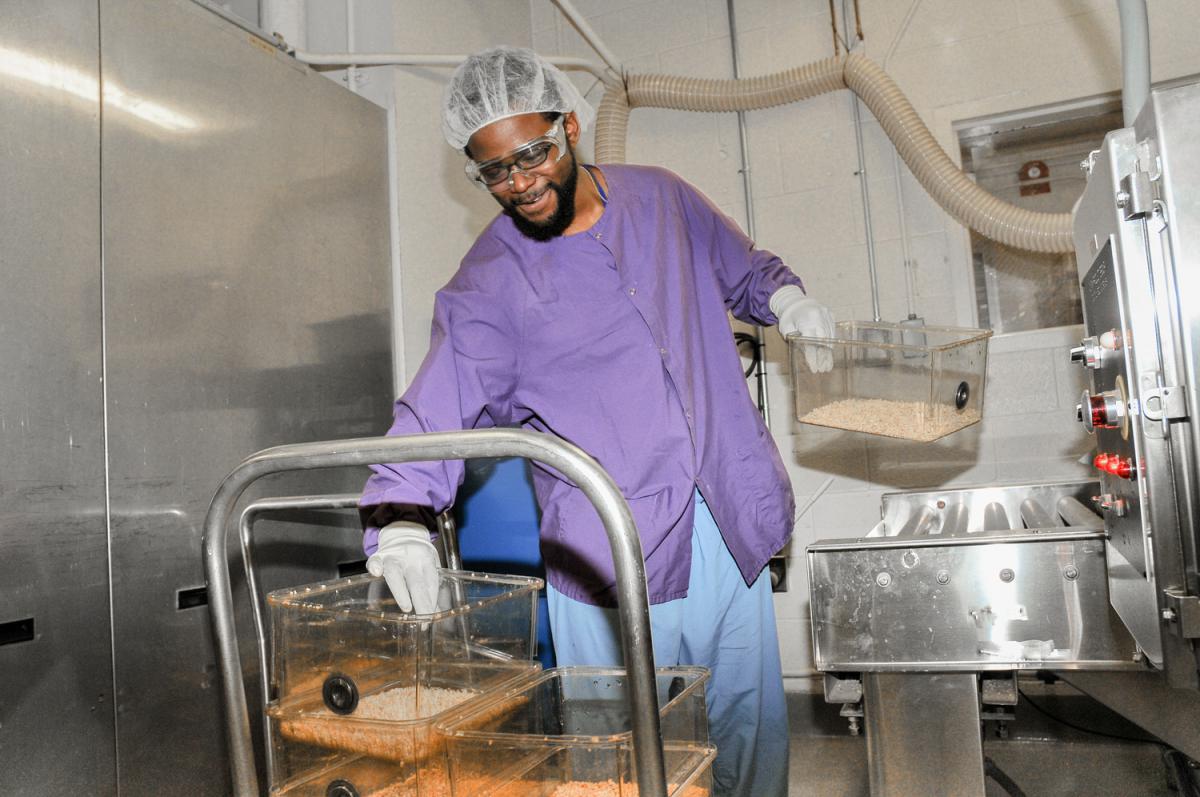
“The [animal care] staff that I have had the pleasure of working with in the many years I've been here have all been dedicated to doing a good job,” Hollingshead said. “In large part, a lot of people within the organization don’t understand the importance of what they do, and they don’t get as much credit as they should. When handing out kudos, it’s not seen as very important.
“But the quality of the animals and the research results derived from them is dependent on the quality of care. The two are intertwined completely and co-dependently,” she said.
Eyes and Ears of the Research
Kimberly Klarmann, Ph.D., studies leukemia in the Mouse Cancer Genetics Program, NCI Center for Cancer Research. “The first thing the caretakers have to look for is lethargy. If they do not catch it, we lose the data because the disease can progress very quickly.
“I received two phone calls early this morning from our caretaker, as well as from caretakers on the weekends,” Klarmann said. “My husband knows that if I get a call at 6 a.m., it’s the caretakers calling to alert me of a mouse that needs immediate attention.”
Klarmann also notes the unwavering commitment of the caretakers, even in recent years, when researchers have had to do more with fewer resources. “One of the things I have been most impressed with is the willingness of the technical and caretaker staff to rise to the challenge of handling the large workload with professionalism, compassion, and intelligence,” Klarmann said.
Raja Sriperumbudur, D.V.M., Ph.D., DCLAM, is the attending veterinarian and manager of receiving and quarantine for the Laboratory Animal Sciences Program (LASP). He said researchers direct the work, but “the animal caretakers are the eyes and ears and the first line of defense in everything associated with the experiments.
“They can detect very tiny changes in the animal that to me might look normal,” he said, “little things, if they are breathing a little differently. They see them every single day.”
AAALAC Inspection Report Reflects Quality of Care
LASP manages 24 animal research facilities—19 in Frederick and 5 in Bethesda. The operation supports 100 investigators in Frederick and 145 in Bethesda, with a combined total of 633 research protocols; it maintains 150,312 animals (102,316 in Frederick and 47,996 in Bethesda) occupying 55,900 cages. LASP facilities recently passed their site visit by the Association for Assessment and Accreditation of Laboratory Animal Care (AAALAC), with one minor suggestion for improvement. Sriperumbudur said it was one of the best reports ever for an NIH facility.
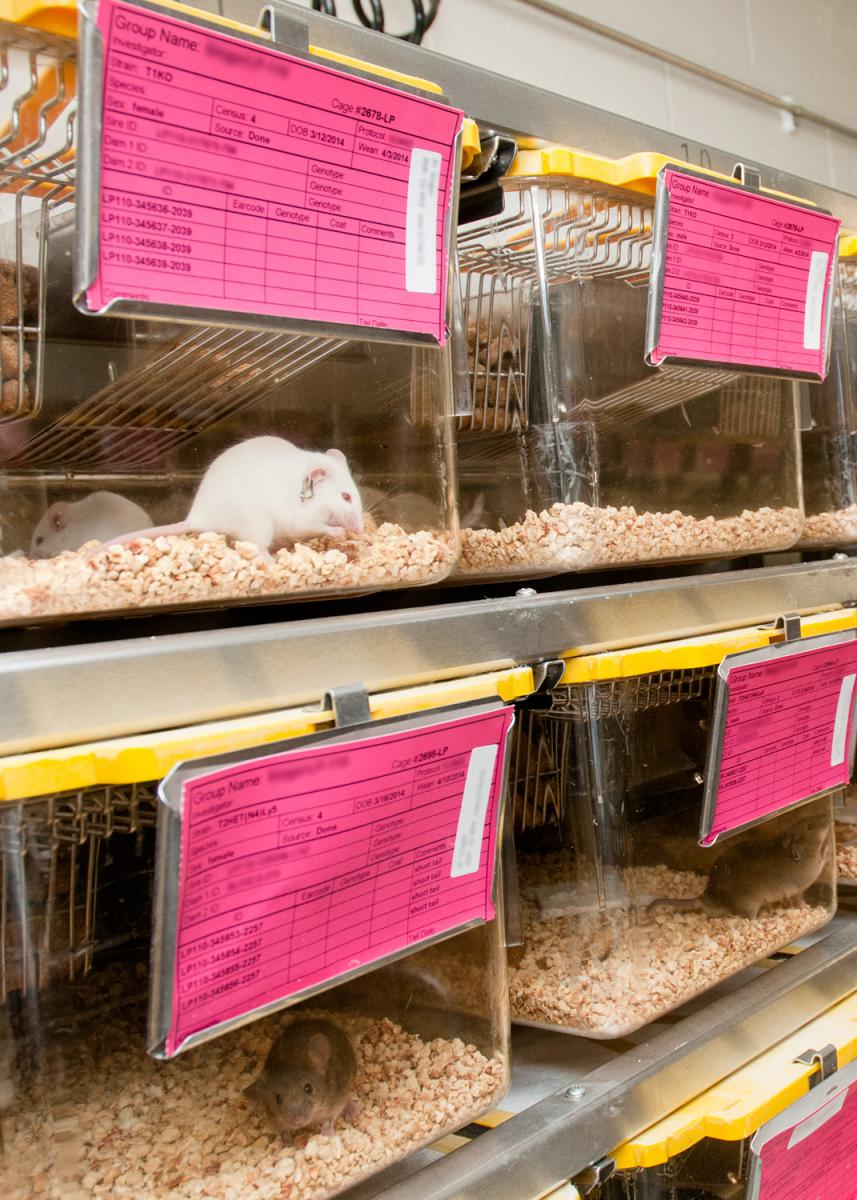 “Considering the nature of the animal experimental work performed here, [the inspectors] mentioned that they did not find a single moribund or sick animal, which is a testament to the husbandry and veterinary care,” Sriperumbudur said.
“Considering the nature of the animal experimental work performed here, [the inspectors] mentioned that they did not find a single moribund or sick animal, which is a testament to the husbandry and veterinary care,” Sriperumbudur said.
As the workday winds down in research laboratories and administrative offices across the campus, the animal areas begin to come alive with activity. The mice wake up early in the evening and hit the water supply right away, thousands of busy creatures going for a sip, their little teeth tapping on the liquid dispensers, a million little taps all at once. Throughout the night they pitter and patter in their clear plastic cages.
“We are here 365 days a year,” Anderson said. “If it snows outside, we sleep right here. It’s not the 9-to-5, shut-it-down-and-go-home kind of job.”
Photos, top to bottom: Kimberly Geisinger inspects one of the mouse cages; the addition of a little shelter can help encourage breeding; Kimberly Geisinger says her work is demanding physically, but, “I love it"; Jose Velez, animal caretaker II, stacks mouse cages that have been cleaned and filled with fresh bedding material; Mice are valuable research participants in the search for new cancer drugs.


